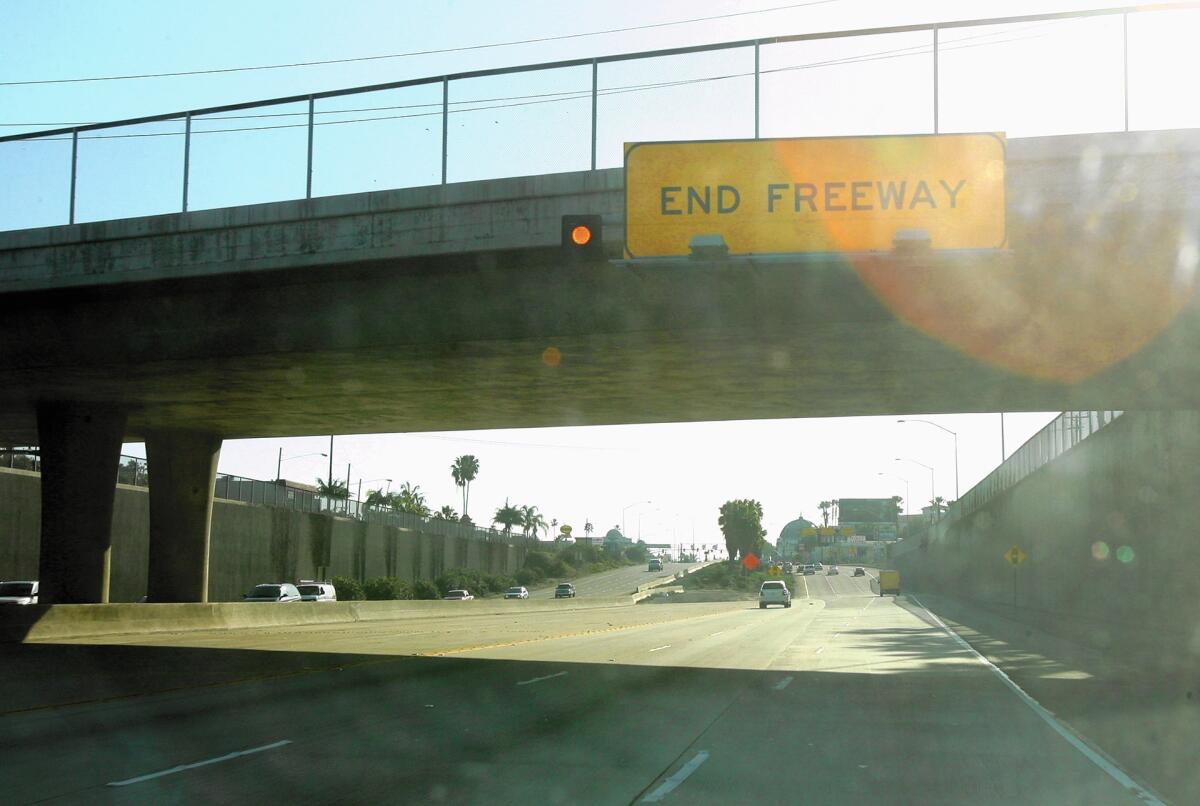Commentary: State must commit to aging infrastructure

The Legislature recently entered into a special session to deal with our state’s most pressing matters. Among the top concerns, and of special concern to local government and area businesses, is transportation.
Roads, highways and bridges are the infrastructure catalyst we all require for our transportation needs, and the current state of our transportation maintenance is dismal and falling apart.
With calls from transportation experts and business organizations to further investment in repairs and upgrades, the state is finally heeding those requests. The question is, Has the state added to the cost of repairs by waiting until the last minute? And where will the funding come from? The answers, it seems, is yes and from hardworking Californians.
Some in the Legislature are floating the idea of a use tax on drivers, while others support an added gasoline tax on top of the California Air Resource Board’s carbon cap and trade tax on gas coming in January 2016.
Last week while visiting my daughter in Lake Tahoe, I was amazed that once we crossed the border into Nevada a gallon of gasoline was $1.50 cheaper. For some California families that can mean spending an additional $2,000 more per year.
The projected cost to improve driving conditions in California, including easing of traffic conditions in major metropolitan areas, is estimated at around $6 billion annually for the next 10 years.
If given the green light, the transportation rehabilitation project could be split among state, counties and local cities, increasing area job opportunities and economic growth.
With businesses reliant upon our streets and highways to move goods and services, and the safety of all drivers who see pot holes, congestion and sink holes, the price of not doing anything will decimate our economy and risk the safety of the public.
The Assembly Republican Caucus presented a well thought out, nine-point, $6.6-billion plan to fund transportation infrastructure without raising additional taxes by taking a portion of six existing funds:
• Using 40% of funds in California’s cap-and-trade program would generate $1 billion-plus annually. Californians currently pay higher prices at the pump because fuels are now included in this program, making cap-and-trade funds directly linked to transportation infrastructure. Better roads mean better fuel efficiency, which leads to a reduction in greenhouse gas emissions.
• Using $1 billion annually from vehicle weight fees. This fee is a noncontroversial fee made to offset the damage and costs done to our roads by heavy trucks.
• Invest half of the governor’s strategic growth fund into shovel-ready road projects. Many do not know that the state budget provides the governor with $400 million a year for projects of his choosing. The Assembly caucus plan prioritizes and reduces this discretionary pot of taxpayer money by half, freeing up to $200 million.
• Eliminating redundancies at Caltrans would give us an extra $500 million annually. The nonpartisan Legislative Analyst Office’s recommendation to eliminate 3,500 redundant positions would not negatively impact and construction jobs.
• Eliminating and capturing savings from 25 percent of long-term vacant state positions would save $685 million annually to use toward infrastructure. There are thousands of vacant positions in state government.
• Make a formal commitment in the state budget general fund to fund transportation $1 billion annually. Transportation is a top priority, a core function of government, and must be funded as such.
• Commit $2.3 billion in approved spending for 2015-16 fiscal year for transportation.
This equals $6.6 billion to fund transportation projects while adding 90,000 jobs to our workforce without raising taxes.
And when you factor in our state’s growth projections, expected to reach 41 million by 2020, we can spend wisely now or spend $68 billion over the next 14 years to usher folks from L.A. to San Francisco on a train project experts agree will cost nearly double by the completion date.
California needs to rebuild its neglected roads and highways. It’s time to be serious about fixing the problem and defer the high-speed rail project. This way we all can enjoy safe travels.
MARIO A. GUERRA is the former mayor of Downey, president of Independent Cities Assn. and treasurer of the California Republican Party.